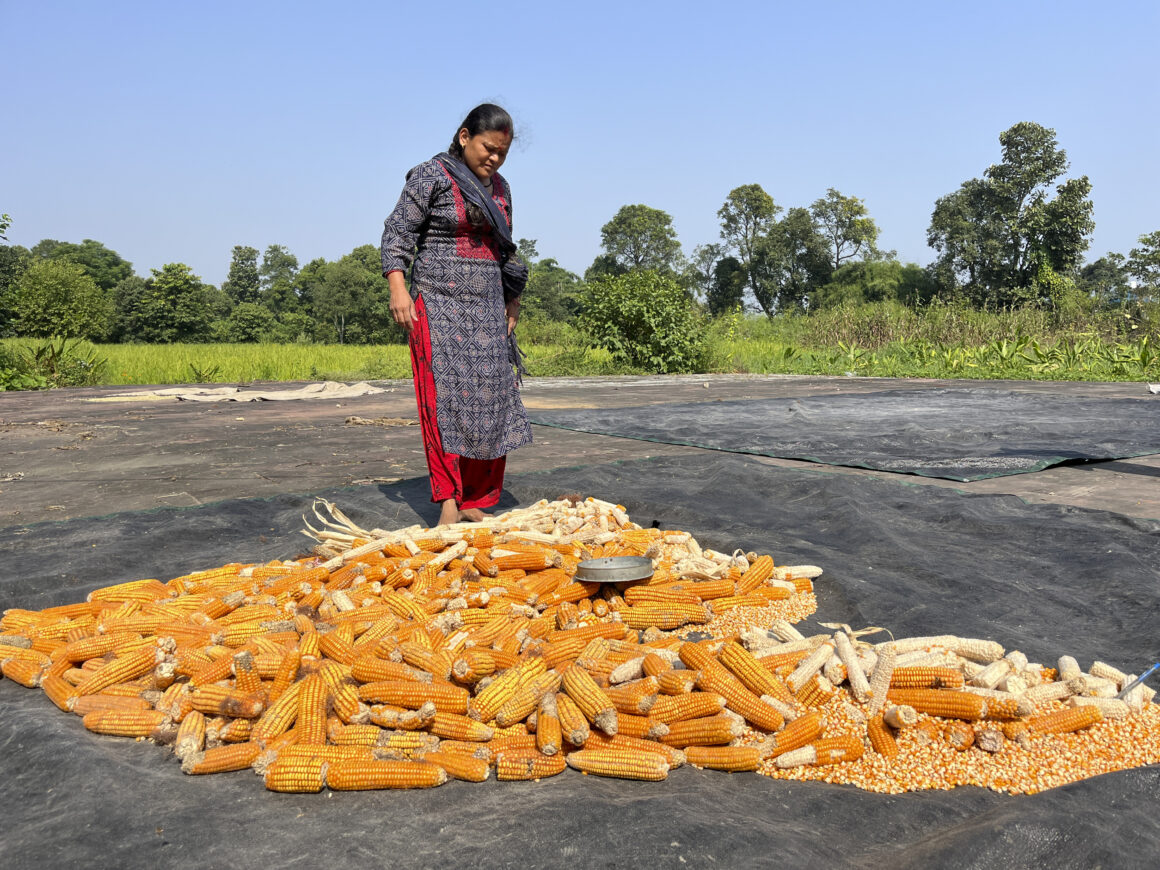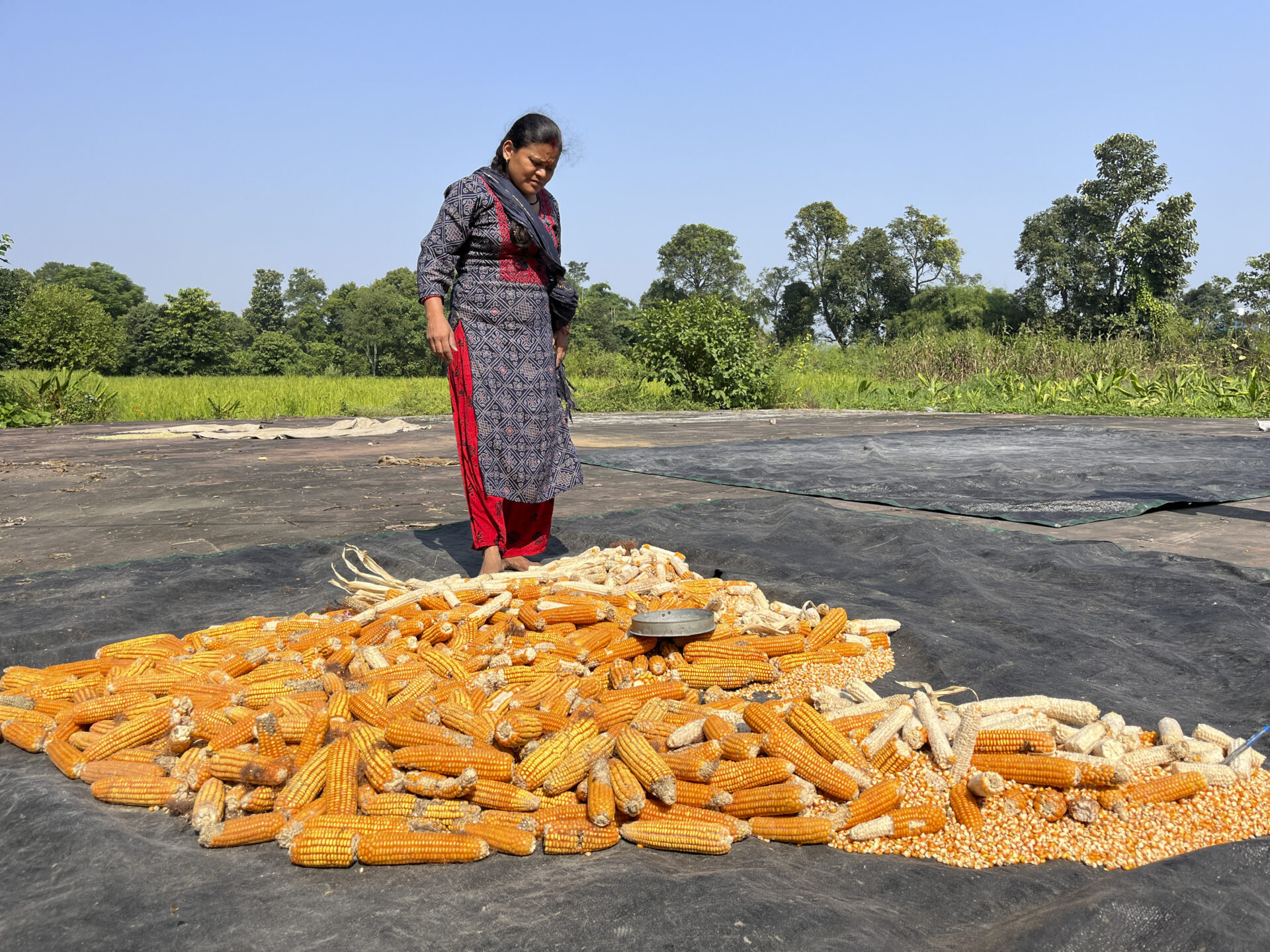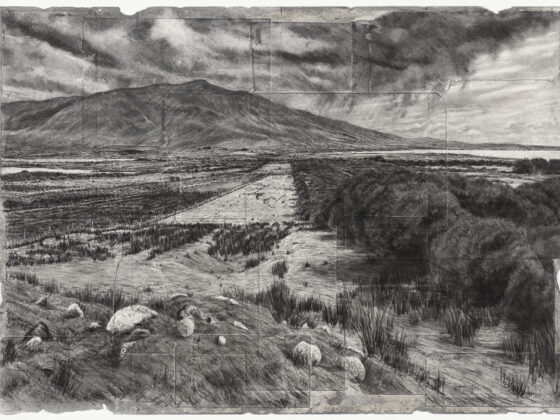LISA FINGLETON REFLECTS ON A MONTH-LONG RESIDENCY AT NAVDANYA BIODIVERSITY AND CONSERVATION FARM IN NORTHERN INDIA.
“We are all connected through food. We are all connected through soil. We are all connected through life. And those are the interconnections that we have to build consciously now.”1
For over 20 years, much of my life and art practice have been focused on food systems, and the increasingly radical acts of growing and eating local and organic food.
I regularly wonder how we have reached this point, where most of the food and seed in the world is controlled by a small number of global corporations. Why are we eating poisoned and ultra-processed food, even though we know it is damaging our guts and making us and our loved ones sick? Why are we, as an island, so dependent on imported food? How can we feed ourselves in increasingly precarious climactic conditions and protect biodiversity at the same time?
These questions propelled me to travel all the way from our farm in Kerry to Navdanya at the foothills of the Himalayas in India. Navdanya biodiversity and conservation farm was founded by Dr Vandana Shiva in 1987 (navdanya.org). Vandana is a prolific writer, internationally renowned food activist, and environmental thinker. She not only resists capitalist food systems at an international level, but she and her team grow 750 varieties of rice, fruit and vegetables in the living seed bank on the farm, as a way to protect and save indigenous seeds.

I travelled with my partner, photographer Rena Blake, to take part in a month-long agro-ecology residency at the Earth University in Navdanya, with 20 other diverse artists and activists from around the world. All the food for the month was vegetarian, organic and locally sourced. The programme started each day with herbal tea at 6:30am, breakfast, an opening circle and shramdaan (shared tasks in the communal area) before heading to the fields to do whatever jobs were needed: harvesting, seed saving or weeding. I was really glad to have a cold bucket shower after even a short stint of working outdoors in 35 degrees and high humidity. This was followed by lectures, practical workshops and opportunities to present our own projects until around 8:30pm each evening. It was brilliant and intense in equal measure.
I drew in journals every day as a way of processing the experience, both for myself and so that I could share it with others upon my return. I set up an outdoor studio for myself on the balcony outside our room overlooking the mango orchard. One of the absolute highlights of the trip was being in the stillness of the seedbank and drawing with the seed savers Sheela Godiyal and Kavita Negi. There was something deeply moving about being surrounded by seeds grown with such love and passion for this planet we call home.
Vandana was extremely generous with her time and energy, delivering lectures with lots of time for discussion afterwards. It was a real privilege to interview her about the interconnectedness between food, creativity and climate change for my short film, The Radical Art of Living (2025). She had strong cautionary messages for Ireland in terms of protecting small growers and food producers. “Just remembering the Irish famine, I would just say, if the current trends continue, every place will be a place for a potential famine.”
Dr Mira Shiva, Vandana’s sister, was with us for a few days, weaving stories from her lifelong experience as a medical doctor and activist. She talked about an international meeting, where a scientist was proposing to create square tomatoes to facilitate easier packaging. Those present, reminded him that everyone knew tomatoes were round, and therefore would know that this was not natural. He responded, “In one generation they will forget that tomatoes were round.”

Mira cautioned us against this collective amnesia and shifting baseline, whereby each generation assumes that their degraded ecological environment is ‘normal’. ‘The Square Tomato’ formed in my mind as a symbol for so many things that are challenging within the current food system. I decided to use it as the title for my current exhibition at Siamsa Tíre in Tralee, which includes the film and drawings from Navdanya.
Before leaving, I asked Vandana how she sustained her energy, and she said “Living truth. Expressing truth is my oxygen.” It’s not always easy to digest hard truths but I left Navdanya with a renewed sense of urgency. People have asked me many times if it was a life changing trip, but I feel it was more life affirming. I didn’t get answers to all my questions but rather a validation for my concerns and a clearer call to action. As Vandana says in the last line of her book, The Nature of Nature, “With every seed we sow, every plant we grow, every morsel we eat, we make a choice between degeneration and regeneration.”2 My choice is clear.
Lisa Fingleton is an artist, writer and organic grower based at The Barna Way, an organic farm, woodland and wildlife sanctuary in Kerry.
lisafingleton.com
Fingleton’s film, The Radical Art of Living: An Interview with Dr Vandana Shiva (2025), is being screened as part of her solo exhibition, ‘The Square Tomato’, which continues at Siamsa Tíre until 22 March.
siamsatire.com
1 Vandana Shiva, The Nature of Nature: The Metabolic Disorder of Climate Change (New Delhi: Women Unlimited Ink, 2024).
2 Ibid.



